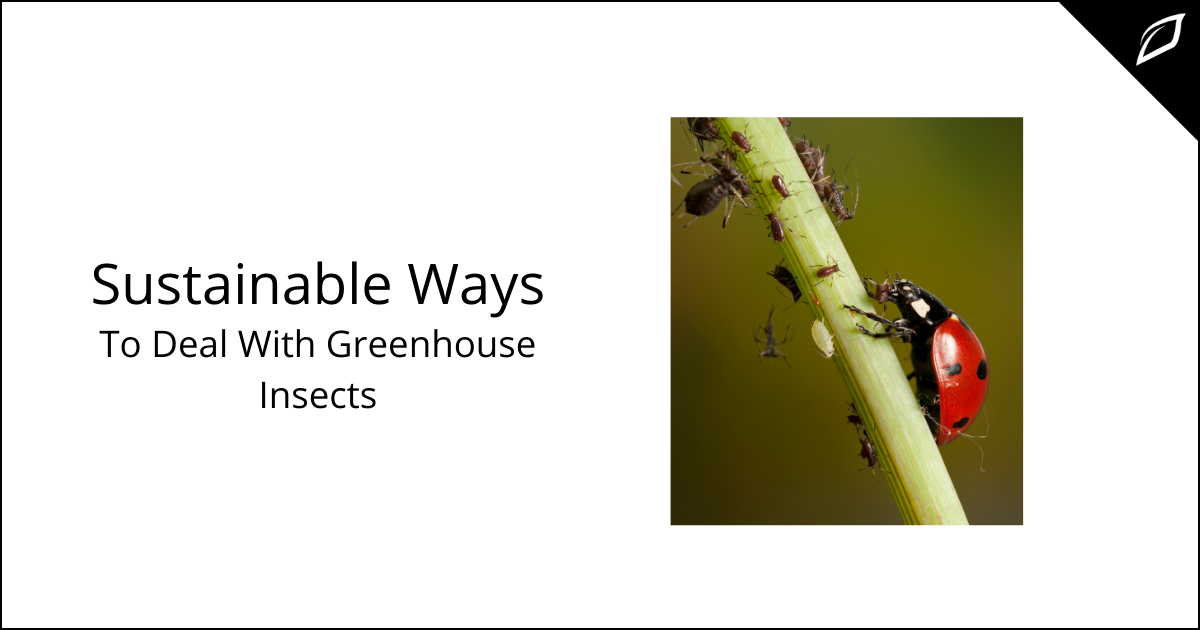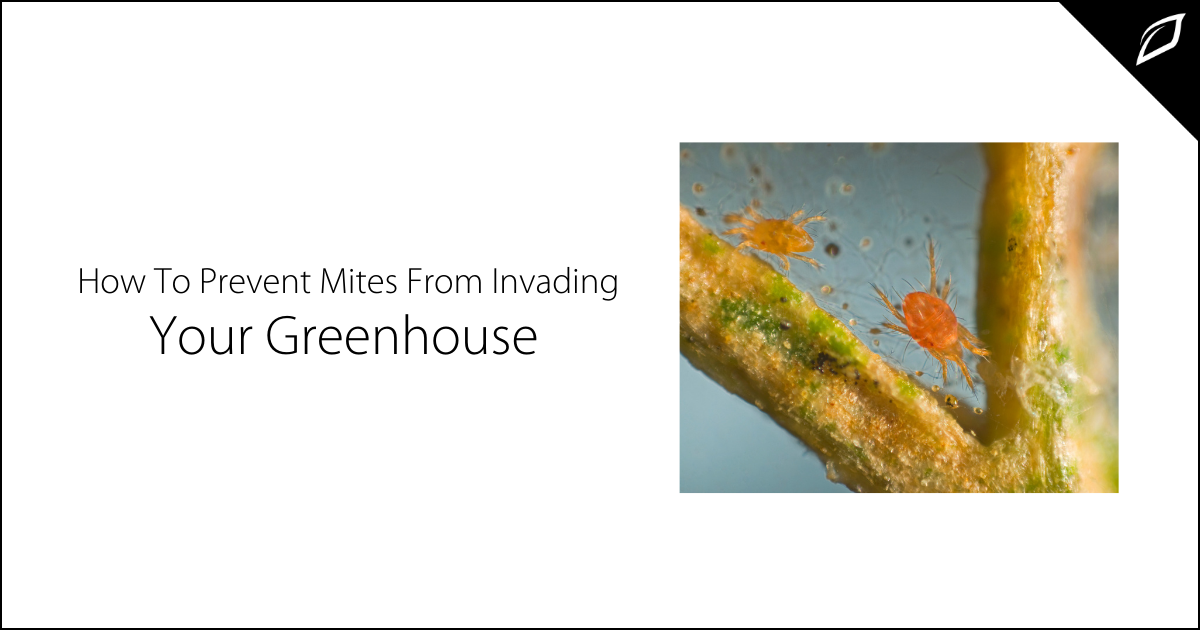How to Prevent Mites From Invading Your Greenhouse
University of Florida (UF) researchers have released their latest insights on mites known to attack hemp plants in Florida. For growers contemplating...

Growing inside a greenhouse provides your plants with a certain amount of protection from harsh weather conditions, but pests can still become an issue. Because your plants are tightly packed together in a confined area, it's especially important to prevent an infestation before it affects your entire grow operation. While the best defense is an exceptional offense, should pests find their way in, eliminate them before they spread to the rest of your plants using sustainable methods to improve your carbon footprint.
Aphids
These soft-bodied insects use their piercing-sucking mouthparts to feed on plant sap. Typically found in colonies on tender terminal growth undersides, leaves can wilt or turn yellow because of excessive sap removal. It's recommended to use a spray bottle with water and dish soap to remove the little creatures. But you can also use a water/vinegar solution, neem oil, or other essential oils. Another way to get rid of aphids is to employ natural predators like ladybugs or green lacewings.
Thrips
Thrips are tiny, slender insects with oddly fringed wings and unusual asymmetrical mouthparts. Most thrip species feed on plants by puncturing and sucking up the contents. Difficult to spot because they're so small but relatively easy to eliminate. Similar to how you treat aphids, apply water with your choice of dish soap, vinegar, or essential oils to remove the pesky insects. To reduce the likelihood of having them return, treat the floor and other surfaces with hydrogen peroxide, killing both thrips and their pupae. Natural predators like ladybugs and green lacewings are another option.
Whiteflies
As entomologists know them, these Hemipterans typically feed on the undersides of plant leaves. They comprise the family Aleyrodidae of insects with over 1550 different species. To remove these flying pests, you'll use similar techniques as you would with aphids and thrips. Spray thoroughly with mild, soapy water, or use vinegar or essential oils. Be mindful to spray the underside of leaves, which is where they lay eggs and feed. You can also use sticky traps. If a leaf is fully covered, it's best to remove the leaf, place inside a plastic bag, seal and throw it away to avoid further spread of contamination. Whiteflies have been known to spread disease from one plant to another, so take extra care when discarding these pests.
Gnats
These tiny flying insects, commonly referred to as gnats, may be fruit flies or fungus gnats. There are many differences between fruit flies vs. gnats. In small numbers, fungus gnats are more of an annoyance than anything. Adult gnats don't actively harm plants or people. However, if their population gets out of hand, the larvae may start feeding on plant roots, causing notable damage, especially to young plants and seedlings. To eliminate gnats, it's best to use a homemade bait. Combine half-cup of warm water, two tablespoons of apple cider vinegar, a tablespoon of sugar, and about five to six drops of liquid dish soap in a cup. Place the uncovered cup away from your plants. Gnats will be lured in by the sugary mixture, but once they dip in for a drink, the dish soap will trap them. Dispose of the contents of the cup and wash and repeat as necessary.
Prevention
Eliminating pests can be timing consuming, so it's best to have a prevention plan in place. Keep your growing space clean, inspect your plants regularly, and disinfect tools often. Place sticky traps throughout your greenhouse and happy growing!.


University of Florida (UF) researchers have released their latest insights on mites known to attack hemp plants in Florida. For growers contemplating...

Dr. Robert Flannery is the first Ph.D. in the United States with certified technical expertise in growing commercial cannabis. He earned his...

Indoor cannabis grow operations have become the industry standard by providing privacy and an environmentally controlled growing space. These indoor...